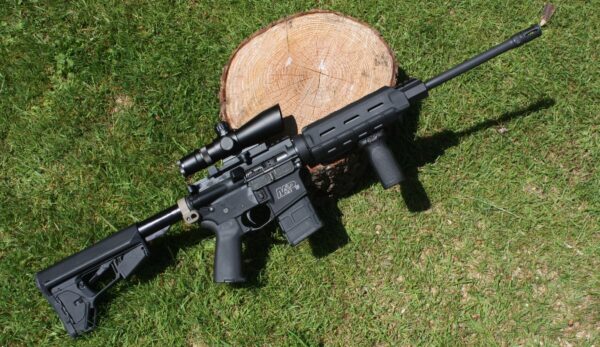
By Dave Workman
Editor-in-Chief
Following the prominence of the U.S. Supreme Court’s June ruling in New York State Rifle & Pistol Association v. Bruen, possibly the second-most important story this year was the high court’s grant of certiorari to four Second Amendment cases, vacating lower court rulings and remanding the cases back to the lower courts for reconsideration under guidelines established by Bruen.
The four cases came from Maryland, California, Hawaii and New Jersey, and one of them—Bianchi v. Frosh, a challenge of the semi-auto rifle ban in Maryland—could determine whether modern rifles such as the AR-15 and its various clones, are protected by the Second Amendment.
Arguments in this case were held earlier this month.
The Maryland case was brought by the Second Amendment Foundation, Citizens Committee for the Right to Keep and Bear Arms, Firearms Policy Coalition, Field Traders LLC and three private citizens.
For the high court to grant certiorari to the gun-related cases suggests Second Amendment issues are on this court’s radar screen. In the past, the court has declined to hear many gun rights cases, but the current court makeup, with six conservatives including three appointed by former President Donald Trump, appears to have caused a sea change. It also was a further confirmation that elections matter.
At the time of the high court’s remand, Alan Gottlieb, SAF founder and executive vice president, observed, “The importance of Justice Clarence Thomas’ majority opinion in the New York right-to-carry case may not be fully understood until all of these other cases have gone through lower court review. What we’re seeing today could be the beginning of court actions that eventually fully restore rights protected by the Second Amendment.
“That tells me we have a Supreme Court willing to rein in lower court activism and limit how far they will allow local and state governments to reach when it comes to placing burdens on the exercise of a fundamental, constitutionally-enumerate right to keep and bear arms,” Gottlieb added.
What’s at stake cannot be overstated. Should the Maryland case return to the Supreme Court, an affirmative ruling on the constitutional protection of modern semi-auto rifles could be shattering to states which have either restrictively regulated or completely banned such firearms. It could immediately and permanently derail efforts to adopt such bans in other states.
The California case could also have broad ramifications. Duncan v. Bonta challenges the ban on so-called “large capacity magazines” in California, but the outcome would have an immediate impact on a major tenet of Measure 114, passed in Oregon in November, and on Washington State’s ban on such magazines, which became effective July 1.
The argument supporting the ban is simple: Proponents say the ban could prevent or at least reduce carnage in a mass shooting. Opponents contend such magazines are original equipment supplied with modern semiautomatic rifles and pistols and are therefore protected by the Second Amendment.
New Jersey’s case is virtually a carbon copy, as the Garden State has imposed a similar magazine ban. As noted at the time by the New Jersey Monitor, “Gun rights advocates predict the remanded cases signal all sorts of gun restrictions nationwide could be undone…”
The story quoted Scott Bach, executive director of the Association of New Jersey Rifle & Pistol Clubs, who said the Bruen ruling “was tectonic.”
“Every law is not going to be vulnerable under this,” Bach said at the time, “but many will. And it hopefully will force lawmakers to be more responsible and more focused in the laws that they pass.”



